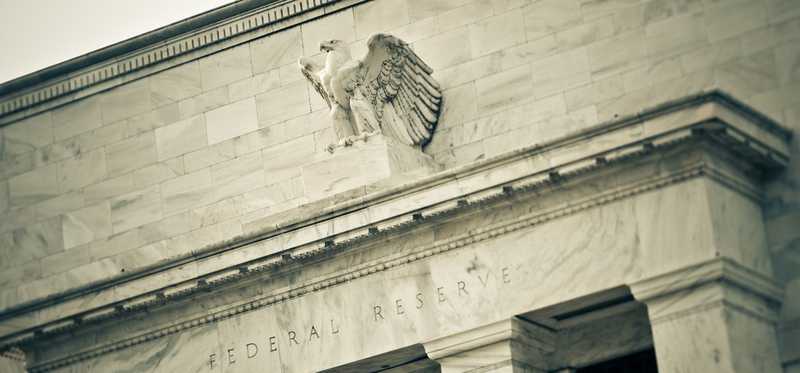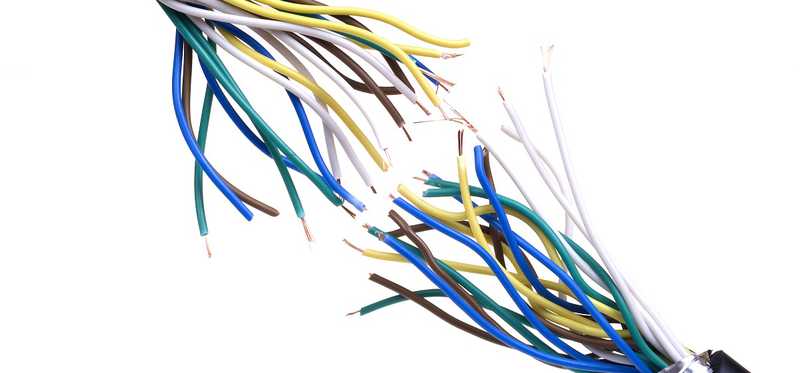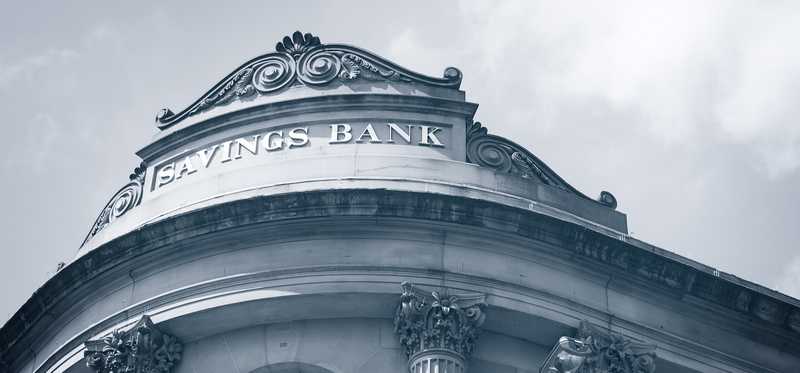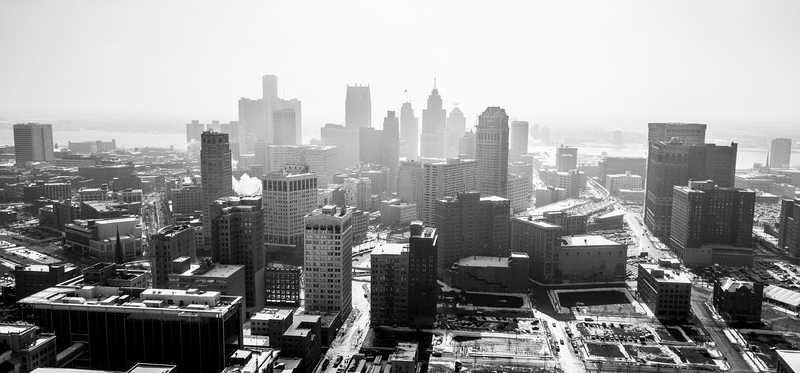The 9 Biggest Bankruptcies Since 1980

The 9 Biggest Bankruptcies Since 1980
Oh, how the mighty have fallen
History is littered with megacompanies that have gone caput. From billion-dollar frauds to banks that bet the farm on risky loans, the largest bankruptcies have a few things in common: Risk-taking executives, a penchant for rapid growth, and risks that were largely overlooked (or simply hidden) from their investors.
Let’s explore the nine largest bankruptcies that have occurred since 1980, how they happened, and what ultimately became of the companies after filing for bankruptcy.
ALSO READ: These 9 Companies May File for Bankruptcy in 2018
Previous
Next

1. Lehman Brothers -- $691 billion in assets (2008)
Lehman Brothers is remembered as a large investment bank, but what brought it down was far from exotic. Lehman was one of the first investment banks to get into mortgage origination, buying up smaller lenders and originators to feed it mortgages it could repackage and resell.
Lehman plunged directly into the mortgage business by acquiring mortgage originators one after another at the turn of the millennium. To drive mortgage volume, it lowered underwriting standards, accepting borrowers with poor FICO® Scores. In other cases, it sourced mortgages from brokers who required higher credit scores, but made no attempts at verifying borrowers’ income, even though the borrowers made trivial down payments.
Lehman doubled down on these low-quality mortgages by adding lots of leverage on top. When it packaged the loans for resale, it held on to the riskiest portions, thus putting it in the “first loss” position if things turned for the worse. Lehman Brothers’ bankruptcy filing was a warning sign of just how big the subprime crisis really was. While problems in mortgages were becoming apparent, its bankruptcy filing sent shockwaves through the market. Just 18 days after Lehman filed for bankruptcy, then-President George Bush signed the controversial Troubled Asset Relief Program (bank bailout) bill into law.
Previous
Next

2. Washington Mutual -- $328 billion in assets (2008)
Also known as WaMu, this savings and loan association took pride in its roots as a financier for middle-class families. In 2003, the company famously rolled out its “Power of Yes” ad campaign, advertising its willingness to approve loans that other banks might decline for their riskiness.
The story of WaMu is a story that’s all too familiar in financial-crisis era bankruptcies: A big bank throws all sanity out of the window to originate mortgages it can repackage and sell as quickly as possible. The bank implemented employee incentive programs that encouraged the worst behaviors. Loan officers, whose principal job is to ensure the loans a bank makes will actually get paid back, were compensated based not on the quality of the loans, but the volume and speed at which they could get approved.
Evidence suggested that its problems were well known internally. As the Washington Post later reported, an internal investigation three years before its failure “found that two top-producing offices -- in Downey and Montebello, Calif. -- had levels of fraud exceeding 58% and 83% of the loans” it originated.
WaMu’s west coast banking operation lives on, albeit under a different name. JPMorgan Chase (NYSE: JPM) ultimately acquired most of the bank’s retail operation in a deal with the FDIC.
Previous
Next

3. WorldCom -- $104 billion in assets (2002)
WorldCom was the extraordinary tale of how a very simple fraud fooled investors, ultimately leading to one of the largest bankruptcies in history. WorldCom was a telecommunications company that grew by acquiring smaller operators, paying for the purchases largely by issuing more stock and borrowing more money.
Time and time again, the companies WorldCom acquired produced substantially more in earnings almost immediately after the acquisition than when they were standalone companies. Many believed it was the result of WorldCom’s operational genius and corporate culture, when in reality, the improvements were primarily derived from accounting fraud.
When its customers made phone calls, the calls often traveled over other operators’ lines. WorldCom paid fees, known as line charges, to the owners of those telephone lines. WorldCom accounted for these expenses as if they were investments from which it would derive benefits in the future, thus enabling it to inflate its earnings by eliminating some of its largest expenses from its income statement.
The fraud worked so long as WorldCom could continue growing, but its growth slowed after regulators got in the way of a planned $115 billion merger with Sprint (NYSE: S), bringing about more skepticism of its business, and a lower stock price, which made growth by acquisition impossible to justify. The company filed bankruptcy just months after announcing that it would restate its earnings in previous accounting periods, turning reported profits into losses.
Previous
Next

4. General Motors -- $82 billion in assets (2009)
This massive automaker went bankrupt during the 2008 financial crisis, but the faltering economy was simply the straw that broke the camel’s back. General Motors (NYSE: GM) had bet big on larger, gas guzzling vehicles just as oil prices began to soar in the mid-2000s.
Meanwhile, the company was saddled with outsize labor expenses, partially the result of its massive pension obligations stemming from the promises it made it employees who had already retired. In its 2008 annual report, GM forecast that it would pay out roughly $15 billion in pension, healthcare, and other long-term benefits to employees in 2009 alone.
The bankruptcy of America’s largest automaker was messy. Prior to filing for bankruptcy, the U.S. government had already supported GM with emergency financing from the Troubled Asset Relief Program. Upon exiting bankruptcy, the U.S. Federal government owned more than 60% of the new company, which it sold off in the years that followed.
Auto manufacturers are terribly capital-intensive, their sales are cyclical, and the industry is highly competitive. From the dawn of the industry, bankruptcies have been a fact of life for automakers and their suppliers, but none come close to matching the size of GM when it filed in 2009.
Previous
Next

5. CIT Group -- $71 billion in assets (2009)
CIT Group (NYSE: CIT) traces its roots back to 1908, when it emerged as a financier for horse drawn carriages. Over the years, it would venture into other commercial financing businesses, helping small- and mid-sized companies finance their receivables, and purchase hard assets with leases.
Like many other failed financial institutions, CIT Group invested heavily in subprime mortgages at the peak of the housing boom of the early 2000s. The company’s portfolio of housing loans, which stood at $2.7 billion (7% of loans and leases) at the end of 2003 surged to $9.9 billion (15% of loans and leases) by the end of 2006.
Of its managed mortgage loans, the majority of which it owned, its borrowers had an average FICO® Score of 636. Along the way, CIT also expanded its presence in consumer lending, particularly in student loans, giving it even more exposure to consumer finance, a business that it had not historically competed in.
Stuffed to the brim with loans of dubious credit quality, CIT Group also suffered from funding its growth with shaky sources of financing. Deposits made up only 4% of its liabilities. The remaining amounts were borrowed from Wall Street for only short periods of time. As a result, CIT Group had to continuously refinance its maturities, which meant it needed constant access to inexpensive credit.
Banks can generally survive stints of poor loan performance and balance sheets funded with hot money, but having both at the same time was a problem CIT Group could only fix with a bankruptcy filing.
Previous
Next

6. Enron -- $66 billion in assets (2001)
Enron was an energy trading firm that got its start in 1985. In the 1990s, Congress deregulated the sale of natural gas, enabling trading firms like Enron to capitalize. In short order, Enron became the largest seller of natural gas in the United States.
With executive compensation packages that rewarded growth at all costs, insiders pursued growth aggressively, even fraudulently. It employed questionable accounting techniques in which it recorded revenue and profits based on its own rosy projections for each contract, rather than booking revenue as it was earned. It also used so-called “special purpose entities” to keep liabilities off its balance sheet, even though the parent company was ultimately responsible for repaying what its SPEs had borrowed.
What was observable to outsiders is that Enron was making more and more money, but no one could credibly explain how, exactly, Enron was making what it reported. Analysts grew increasingly annoyed with its lack of disclosure. On a now-famous conference call in 2001, an analyst asked why Enron couldn’t publish a balance sheet with its earnings releases, as virtually every other company does. Jeff Skilling, Enron’s then-CEO, had no explanation.
Enron’s failure was extraordinary because it also dragged down its auditor, a “Big Five” auditing firm, Arthur Andersen. Upon learning of an investigation into Enron by the Securities and Exchange Commission, Arthur Andersen destroyed thousands of documents, emails, and other files on Enron. If an auditor cannot be trusted, its services have no value. Arthur Andersen surrendered its licenses and was dissolved.
Previous
Next

7. Conseco -- $61 billion in assets (2002)
This financial holding company is the classic case of a roll-up gone wrong. From the very beginning, Conseco was all about growth by acquisition. Fortune Magazine reported that in the 17-year period following its founding in 1982, Conseco “absorbed no fewer than 44 insurers.”
Its acquisitive nature made it a target for skeptics who focused on the company’s aggressive accounting and its never-ending desire to do yet another deal. Fast growth gave it a high stock price, which it could use to fuel even more growth as it acquired rivals primarily in all- or mostly-stock deals. Like many roll-ups, Conseco argued that it could generate higher returns by combining insurers, cutting costs, and cross-selling products to more customers.
Conseco ultimately unraveled when its thirst for growth sent it into unfamiliar territory. After acquiring virtually any insurer willing to agree to a buyout, Conseco turned to consumer finance companies. It acquired Green Tree Financial, which financed everything from mobile homes to home improvements and recreational vehicles, for $7.6 billion in 1998.
A combination of increasing competition, falling interest rates, weakening credit standards, and a short-lived recession in the early 2000s pummeled Green Tree. Almost immediately after the acquisition closed, Conseco was forced to inject more cash into the business to shore up the lending unit’s balance sheet.
Previous
Next

8. MF Global -- $41 billion in assets (2011)
For years, MF Global made its money in the relatively boring brokerage business. It helped customers trade futures contracts, which are bets on the future price for everything from stock indexes to bushels of corn and pork bellies.
The problem with MF Global is that it never really made much money. Like many brokers, it charged low commissions to bring in as many customers as possible, hoping to make up for low prices with volume and interest it earned on its client assets. (When you keep cash in a brokerage account, it can be invested in super-safe assets, thus earning a steady stream of income for the broker.)
To make more money, MF Global couldn’t just rely on helping other people make trades. It decided to start making its own trades. The broker’s CEO, John Corzine, former governor of New Jersey, and before that, the CEO of Goldman Sachs, started betting heavily on high-yielding debt issued by Portugal, Italy, Greece, and Spain during an unfolding European Debt Crisis.
Of course, this debt was high-yielding for a reason: It was risky. But thanks to the way the company structured the trades, MF Global could book an immediate profit every time it increased its wagers on European government debt. The temptation to take risks that might prove costly in the future for profits today was simply too enticing.
MF Global’s trades started going against the firm, and its counterparties required it to post more and more collateral. That’s when MF Global made its biggest mistake. The company illegally used its clients’ brokerage assets to paper over the losses on the trades it made for its own account. Brokerage assets owned by a brokerage’s clients and trading assets owned by the brokerage are supposed to be “segregated,” and never co-mingled.
Luckily, MF Global was wound down and it had sufficient assets to repay its brokerage clients in full, though it took years for some of its clients to recoup all of the money they kept with the brokerage. Its lenders and shareholders weren’t so lucky, as they were effectively wiped out in bankruptcy.
ALSO READ: Ask a Fool: What Happens to Shareholders After a Company Declares Bankruptcy?
Previous
Next

9. Chrysler -- $39 billion in assets (2009)
The smallest of the Big Three automakers, Chrysler was most heavily reliant on the largest vehicles. The company’s best-selling vehicles were sold under the Jeep and Dodge brand, which included Jeep SUVs and Dodge Ram trucks.
As gas prices surged and homebuilders cut back on investments (contractors and homebuilders are some of the largest buyers of trucks), Chrysler’s sales plunged. The company reported that in 2008 it sold 31% fewer trucks and 29% fewer cars than in 2007. Chrysler dodged a bankruptcy filing in the 1970s thanks to U.S. government loan guarantees, but it became increasingly clear during the Great Financial Crisis that there was no easy escape this time around.
Chrysler filed for bankruptcy in April 2009, and emerged from bankruptcy in June 2009 with United Auto Workers pension fund, Fiat, and the U.S. government as principal owners. Since then, Chrysler has put itself on much better financial footing. Fiat exercised an option to become the majority owner, and the company is now a subsidiary of Fiat Chrysler Automobiles (NYSE: FCAU).
Previous
Next

Learning from history’s failures
The list of the largest corporate bankruptcies includes banks, brokerages, insurers, automakers, and telecom and utility companies, all very different businesses. But despite their operating differences, the problems that sent them to bankruptcy court were all very similar.
All of them used large amounts of financial leverage. Sometimes it was pure debt. In other cases, like the automakers, it came in the form of large pension obligations, which slowly drained the companies of any would-be profits.
Most of the companies on this list also got hooked on activities that drove short-term profits. Banks loaded up on subprime mortgages, because lending money to risky borrowers was an easy way to grow in the present, at the cost of risks that would only become evident in the long haul. MF Global made trades that allowed it to book profits immediately, though at the cost of larger losses later.
Finally, at one point or another, all of these companies employed a “growth at all costs” strategy. The failed automakers measured their success or failure based on market share, rather than profits. The banks judged their performance by the size of their loan portfolios, not the quality of their assets. WorldCom, Enron, and Conseco were all aggressive acquirers, each eager to buy another business regardless of whether the price made sense.
Jordan Wathen has no position in any of the stocks mentioned. The Motley Fool has no position in any of the stocks mentioned. The Motley Fool has a disclosure policy.
Previous
Next
Invest Smarter with The Motley Fool
Join Over Half a Million Premium Members Receiving…
- New Stock Picks Each Month
- Detailed Analysis of Companies
- Model Portfolios
- Live Streaming During Market Hours
- And Much More
READ MORE
HOW THE MOTLEY FOOL CAN HELP YOU
-
Premium Investing Guidance
Market beating stocks from our award-winning service
-
The Daily Upside Newsletter
Investment news and high-quality insights delivered straight to your inbox
-
Get Started Investing
You can do it. Successful investing in just a few steps
-
Win at Retirement
Secrets and strategies for the post-work life you want.
-
Find a Broker
Find the right brokerage account for you.
-
Listen to our Podcasts
Hear our experts take on stocks, the market, and how to invest.
Premium Investing Services
Invest better with The Motley Fool. Get stock recommendations, portfolio guidance, and more from The Motley Fool's premium services.